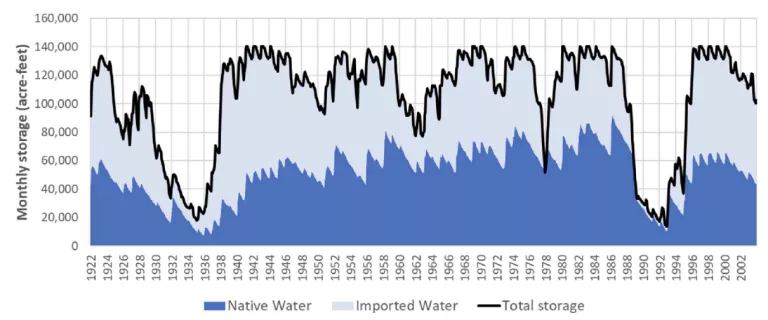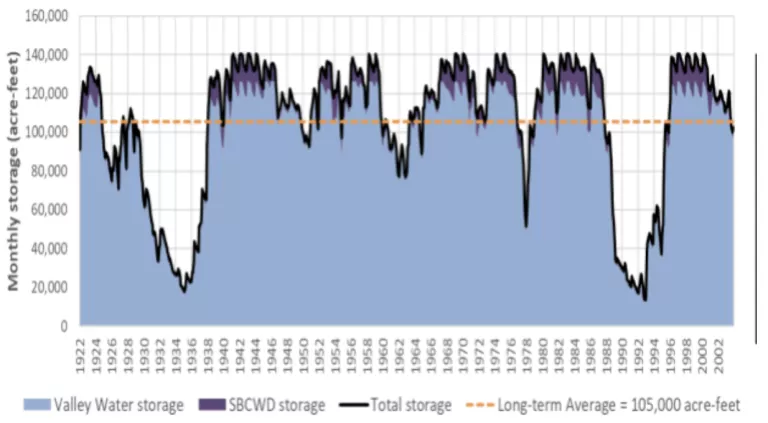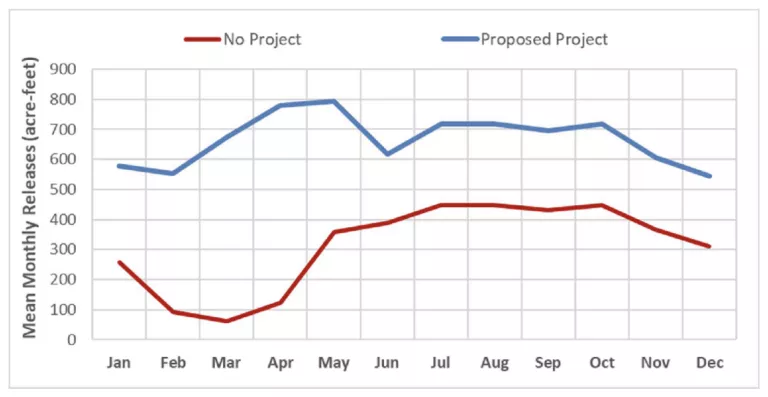February 12, 2024
Santa Clara Valley Water District
5750 Almaden Expressway
San Jose, CA 95118
Via email to:
Clerk of the Board <clerkoftheboard@valleywater.org>
Tony Estremera <testremera@valleywater.org>
John Varela <jvarela@valleywater.org>
Barbara Keegan <bkeegan@valleywater.org>
Richard Santos <rsantos@valleywater.org>
Jim Beall <jbeall@valleywater.org>
Nai Hsueh <nhsueh@valleywater.org>
Rebecca Eisenberg <reisenberg@valleywater.org>
Re: 2/13/24 Valley Water Board Agenda Item 8.1. Update on the Pacheco Reservoir Expansion Project.
Dear Chair Hsueh and Board of Directors,
Thank you for holding this first of six informational sessions about the benefits and operations of the Pacheco Reservoir Project. Please find attached our specific comments on the presentation slides. Similar comments were provided when the Water Storage Exploratory Committee heard this item on December 8, 2023. As a matter of practice, it would be helpful for the Board to receive comments submitted when agenda items were previously heard by a committee.
According to the staff report, “staff has prepared a presentation providing a more detailed explanation of how Valley Water plans to operate the completed Project to include required infrastructure, redundancy plans and operational challenges. Staff has also provided additional detail on the Project’s benefits and how these benefits have been calculated and accounted for during the design phase.”
Unfortunately, the presentation in the agenda packet provides very little new information about benefits or operations and does not discuss redundancy plans or operational challenges.
Aside from the specific comments attached, we have a few overarching concerns as follows.
- This presentation describes very little about how the reservoir will be operated. Parameters and triggers for storage to and release from the reservoir need to be defined for both water supply storage and for the habitat storage reserve. Criteria for pumping water to Pacheco Reservoir rather than storing it in San Luis Reservoir or in the groundwater basins need to be described.
- The staff report mentions a “flow release schedule was developed with ... National Marine Fisheries Service” but no details are provided about this. More information is needed to understand how the flow release schedule will fit into Project operations.
- Staff should provide a schedule for development of complete operational parameters and scenarios so the Board can plan for another presentation when enough information is available to understand and evaluate Project operations.
- The staff report claims that Valley Water will have “... 100,000 acre-feet of additional storage ...” This does not add up considering 35% partnerships and 35,000 acre-feet for habitat storage. We calculate storage for Valley Water will be about 60,000 AF.
- The main benefit of this Project is emergency water supply, previously estimated at 5,000 to 6,000 acre-feet per year. However, it appears that environmental benefits negotiated through the Water Supply Investment Program (water supplied to the refuges and water for fish flows) will take away from water supply. This needs to be explained.
Thank you for considering our input on this very important process to provide more information to the Board and the public about this controversial project. We encourage you to hold the remaining five sessions about the Pacheco Reservoir Project as soon as possible to inform the Water Supply Master Plan update, and to provide transparency and public consultation opportunities.
Sincerely,
Katja Irvin, AICP
Conservation Committee
Sierra Club Loma Prieta Chapter
Molly Culton
Chapter Organizing Manager
Sierra Club California
February 13, 2024 Valley Water Board Agenda Item 8.1.
Update on the Pacheco Reservoir Expansion Project
Sierra Club Comments on Presentation Slides
Presentation Slide 2 Needs Addressed by Pacheco Reservoir Expansion Project
- Restore Federally Threatened Steelhead Fish Habitat
- There is no guarantee that the proposed additional flows and restored habitat will result in any recovery of the Steelhead. Operational parameters for the 35,000 acre-foot habitat storage reserve need to be provided in order to have a meaningful discussion of overall reservoir operations.
- Improve Delta Watershed Wetlands
- More information is needed to quantify the benefits of providing water in one specific water year type (below normal).
- Eliminate Water Quality Issues from San Luis Reservoir
- This graphic should be updated to say “reduce” rather than “eliminate” to align with slide 12.
- Reduction of Downstream Flooding
- As requested in previous public comments, reduction of flooding has not been identified as a benefit of this project and should not be included here.
Presentation Slide 4 Numerical Modeling Framework for Water Operations
- What does all this modeling mean for actual operations, especially for the habitat storage reserve?
Presentation Slide 5 Expanded Reservoir Water Sources

- This graph should be updated to provide more complete and up-to-date information as follows.
- The graph should show data through 2022 to enable analysis of more recent conditions.
- It is not clear that this graph is showing model outputs based on 2030 climate change projections to alter historic data.
- The graph should show what would have been stored based on the hydrology and project deliveries that occurred in these years. Then the difference between the actual historic numbers and climate change projected values can be evaluated and discussed.
- The data points shown here are annual, so the meaning of “monthly storage” on the y-axis should be explained in that context.
Presentation Slide 7 Long-Term Storage of Expanded Reservoir

- The graph should show data through 2022 to enable analysis of more recent conditions.
- The graph does not show water stored for fish. This part of project operations should be included.
- The graph does not show water moved through Pacheco Reservoir to alleviate water quality issues in San Luis Reservoir. This part of project operations should be included.
Presentation Slide 9 The Project will Enhance Water Supply
“Maximum water supply increase of 24,000 acre-feet during critical year; limited by demand”
- Additional water supply is not included above as a benefit provided by the Project. Much more information is needed to understand how this new benefit has come about.
- Previous reports have said there will be no increase in water supply other than emergency supply, and this project has been categorized as optimizing the system, not providing additional supply.
- How is water supply increase limited by demand during a critical year? This does not make sense.
Presentation Slide 10 San Luis Reservoir Low Point Water Quality Issues
“Spikes in taste and odor measuring times normal levels, which cause problems in today’s domestic supply”
- These water quality issues have been mitigated to date using other methods. These other methods are surely more cost effective than building this new dam.
Presentation Slide 12 Reduces San Luis Low Point Water Quality Issues
- Thank you to staff for changing “eliminates” to “reduces” after public comments made to the Water Storage Exploratory Committee. This should also be changed in the graphic on slide 2.
- What is the analysis period used to determine 97% reduction in water quality issues?
- 97% reduction of water quality issues seems unlikely and needs to be explained. Nutrients will enter the reservoir from the Pacheco watershed and will also contribute to water quality issues.
Presentation Slide 14 Improved Releases from Expanded Reservoir

- What is “no project”? Does it include the expansion of San Luis Reservoir? More information is needed to understand and evaluate the no project alternative.
- The graph shows several hundred additional acre-feet of water released every month on average. Where is the water coming from? How much from the Delta? How much from the watershed?
Presentation Slide 15 Supports Federally Threatened Steelhead Recovery
“Contributes to the development of an independent population in the Pajaro River watershed” and “Increases South Central California Coast Steelhead cohort score between 147%”
- Thank you to staff for changing “enables” to “supports” after public comments made to the Water Storage Exploratory Committee.
- Who has verified the 147% increase in cohort score? In Draft EIR comments, NMFS questioned how the objectives for water supply reliability/operational flexibility and for increasing habitat for steelhead via improved flow and water temperature conditions will be managed during drought periods. This should be discussed.
- How does a 147% increase in cohort score translate to the number of fish?
Presentation Slide 17 Enhances Bay-Delta Ecosystem
“Dedicates 2,000 acre-feet for wetlands in below-normal water years”
- Additional analysis is needed. How much would have been supplied between 2012 and 2022 using actual hydrology for those years?
- With climate change, there will be more dry and wet years and fewer years in the middle, so this benefit is likely to be less in the future. This needs to be accounted for.
Presentation Slide 19 Reduces Flooding in Downstream Communities
“Reservoir expansion can reduce peak flood flows by up to 46% in Pacheco Creek”
- As previously noted, flood protection is not officially a benefit of this project and is purely incidental. To continue highlighting flood benefits is misleading.
- If Valley Water wants to continue highlighting incidental flood benefits, it should always be made clear that the reservoir will not be operated for flood control.